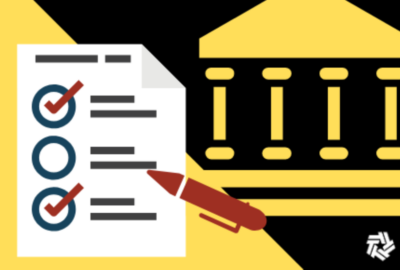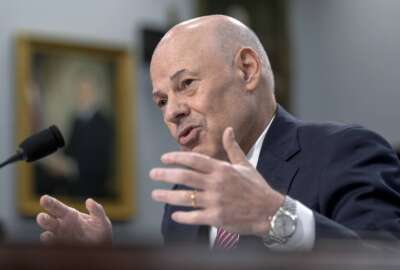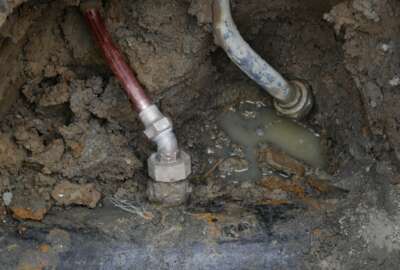A new source of rising cost and oversight for Medicare
"There's a need for additional oversight to ensure that this service, remote patient monitoring, is being used and billed appropriately," said Ann Maxwell.
The rise of telemedicine means more people are monitored remotely. Medicare pays for a lot of remote monitoring. But according to the Department of Health and Human Services inspector general, Medicare officials need a lot more insight into who’s monitored remotely and why. To share the details, the HHS Deputy Inspector General for Evaluation and Inspections, Ann Maxwell, joined the Federal Drive with Tom Temin.
Interview transcript:
Tom Temin And what were you getting at here? Let’s start with the idea of remote monitoring. I imagine people might confuse that with remote visits that rose under the pandemic, but it’s not really the same thing, is it?
Ann Maxwell No, you’re right, Tom. It’s not. Although you are correct that both did have tremendous increase in utilization through the pandemic. But remote patient monitoring is a telehealth technology where digital devices are used to monitor a patient’s health remotely. So you and your listeners might probably have seen movies where NASA Ground Control is monitoring astronauts health from space. That’s remote patient monitoring.
Tom Temin Sure. We’ve seen that on television, for real.
Ann Maxwell Right. Now, for those of us who are not going into space, remote patient monitoring looks more like a digital device in your home where the patient can collect and transmit data such as blood pressure, weight, glucose levels, and then the provider can use that data to manage the patient’s condition.
Tom Temin And for Medicare to pay for those types of services, remote monitoring, I guess the question is, is it a visit? Is it a download? I mean, how do you even determine what the cost basis is for paying for a service like that? Or how do they do it?
Ann Maxwell It is not a visit. It is three separate parts that Medicare pays for since 2019. And those components are education and device setup, providing the device, and then monitoring results and consulting with the patient. All of those are typically done remotely.
Tom Temin So lots of things for the office code jockeys to understand.
Ann Maxwell Indeed, indeed.
Tom Temin All right. And you looked at this and found that the Medicare writ large insight into remote monitoring needs some work. Tell us what you found.
Ann Maxwell I think there’s two major stories in our report. And both of those stories, when combined, show there’s a need for additional oversight to ensure that this service, remote patient monitoring, is being used and billed appropriately. So the first story is really a story of growth. Our report demonstrates, as we’ve talked about already in this segment, there is a tremendous growth in telehealth writ large, but also specifically in remote patient monitoring. So we show that there was a ten-fold jump between 2019 and 2022 in the number of beneficiaries, patients that is, are getting this service. That equates to a twenty-fold leap in the actual payment from Medicare. But just as important as the growth we show that’s already occurred, is the potential growth in the future. So what we showed is almost half — I think a little more than half — of Medicare patients are getting remote patient monitoring for monitoring their hypertension. And even though those comprise a large portion, currently, it’s actually still a small portion of the overall Medicare population that has hypertension. So you can see the tremendous potential for this to continue to grow into the future. So given that growth, both past and potential growth in the future, it’s really, really important that Medicare has information for oversight. And that was the second story that our study really showed, and that is Medicare does, in fact, lack key information for oversight. They don’t always know who ordered the remote patient monitoring. They lack information about the types of health data being monitored and the types of devices that the enrollees and patients have. And in some cases, they lack information about what disease or condition is actually being monitored. So as I said at the beginning, when you put those two pieces together, our conclusion is that Medicare needs more information to ensure that this service is being used and billed appropriately.
Tom Temin And do we have any sense of the total cost, as it stands now, for remote monitoring for Medicare patients?
Ann Maxwell Yes, we do. There was a 200-fold increase in payments. So in 2022, Medicare — and this is both traditional Medicare and Medicare Advantage — collectively, they paid more than $300 million for these services. Now, that’s compared to just $15 million in 2019.
Tom Temin We’re speaking with Ann Maxwell, deputy inspector general, for evaluation inspections at Health and Human Services. And by the way, the fact of Medicare covering it is that what causes this exponential, literally exponential growth in services rendered? Or is it simply growing on its own and Medicare is trying to keep up?
Ann Maxwell Yeah, that’s a good question. Our work was a deep dive into Medicare billing, so we have great insight into what’s being billed, but not an insight into the question that you just asked. What we did find was that the increase was both in the number of patients who are receiving this service as well as the average cost of those services. So it does look like more people are using the services and they’re using it more frequently.
Tom Temin Yes, I was just curious about that because just to make an analogy, if they suddenly started covering hair transplants or implants, the number of bald men would go down by half if Medicare paid for it. It’s a chicken and egg question, I suppose. But getting back to the information on the oversight question, what would Medicare do with the information if it knew the types of data that’s being transmitted, the types of devices being used, and for what people are being monitored? Does that imply that there is coverage that’s not qualified, that’s being paid for?
Ann Maxwell Given the expansion of this new service and the potential for its benefit, because this can be used to monitor chronic conditions is what we’re seeing right now. It can also be used to monitor acute conditions. It’s just critical that [the Centers for Medicare and Medicaid Services (CMS)] has all the information it needs to ensure that it’s being used and billed appropriately. Our ultimate aim at the IG’s office is to make sure that any new policies or technologies like this that have this incredible potential to improve care and to enhance access actually achieve those goals. And are not compromised by fraud, waste and abuse. And so the information we would like CMS to collect and we think it’s important for CMS to collect has that goal in mind to make sure the service is not compromised by fraud, waste or abuse.
Tom Temin So it sounds like they could use, for example, some kind of algorithmic evaluation to say if it’s people over 65 and they’re males or females in this or that demographic group, and here’s what we know about hypertension in that community, then it would be able to, the CMS would be able to tell whether a particular population’s billing is out of bounds and at least have a basis for looking into it. Would that be an example?
Ann Maxwell That’s correct. So, for example, if we knew what health data, if CMS knew what health data were being transmitted, they would understand, as you are exactly saying, whether or not that lined up with what the patient’s needs were. The point is, Medicare wants to pay for medically necessary care once they’re sure that’s medically necessary, but does not want to pay for care that’s not medically necessary. Another example is Medicare doesn’t always know the device that’s being provided, and Medicare only pays for devices that are FDA-approved. And so we want to make sure that patients are actually receiving devices that the [Food and Drug Administration] has approved are legitimate and will actually transmit reliable information to providers.
Tom Temin So your primary recommendations to CMS in the Medicare side are then what? Maybe highlight those for us.
Ann Maxwell Our recommendations are really grouped into two categories. One is the need for more transparency that we’ve been talking about. Get the data you need to understand how the billing is, how it’s being used, what are the services it’s going for, who it’s paying for, and then use that information for greater oversight. So our recommendations around transparency are to require that remote patient monitoring be ordered and that ordering information be included on claims, that they develop methods to identify what health data are being monitored and the type of device, and then identify and monitor companies that bill for remote patient monitoring. And then, of course, wrapping that all up is using all that information to implement additional safeguards. However, we also recommend in addition to these additional safeguards, we also recommend provider education. That’s also a very important tool. We want to make sure the providers know what these services are and how to appropriately bill.
Tom Temin Right. And also, I want to get back to that point about care, because there is a larger effort to improve the effectiveness of care and, get around to the the outcomes-based payment system and so forth. And this is a long term effort. But you want to, I would presume, also ensure that providers are using the data that’s getting paid for. In other words, if if the office manager walks in and “here doctors, the stack of overnight hypertension reports is great” and throws them on a stack and nothing changes, then you’re paying essentially for something that’s nice to have, but nobody’s using.
Ann Maxwell Absolutely. That is the most concerning of the possibilities, that we’re paying for the service that then isn’t actually being used to treat care. We did find in our report that approximately 43% of enrollees who receive remote patient monitoring did not receive all three components that I mentioned earlier on. So that’s first component is education. Second is getting a device and third is the monitoring you just mentioned. Now most of the time, when something was missing, it was those first two. But we did note in the report that a total of 12% of enrollees did not receive treatment management. There was no bill for, just as you said, there was no bill for the doctor actually looking at the information and providing an adjustment to care or managing that chronic condition.
Tom Temin Imagine monitoring someone for two years, not doing anything with it, and they have a stroke. Then the costs really go up and they could have been prevented.
Ann Maxwell Absolutely. And that’s the point of remote patient monitoring. To do just that, to be able to monitor in real time patients conditions, to prevent complications, hospitalizations or possibly even death.
Tom Temin And CMS and Medicare pretty much agreed with your recommendations.
Ann Maxwell They did. They either concurred or said they would take into consideration all five of our recommendations. CMS laid out for us the robust program integrity strategy that they’re already putting in place to prevent Medicare improper payments, but said that it is thinking about its future steps it would take in consideration our suggestions for more information and heightened oversight.
Copyright © 2024 Federal News Network. All rights reserved. This website is not intended for users located within the European Economic Area.
Tom Temin is host of the Federal Drive and has been providing insight on federal technology and management issues for more than 30 years.
Follow @tteminWFED






